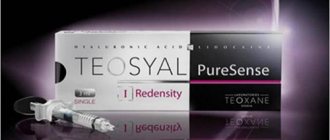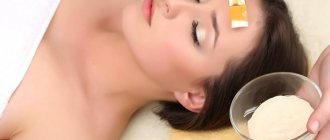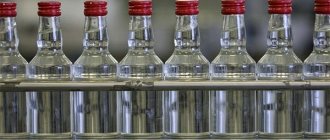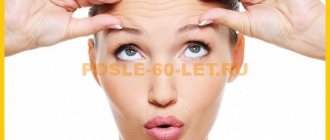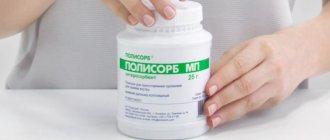- Lipofilling of lips
- Lipofilling of the area around the eyes
- Lipofilling of nasolabial folds
- Lipofilling of cheekbones
Facial lipofilling is a rejuvenating operation that corrects problem areas of the face. It is performed as an alternative to contouring based on hyaluric acid. With the help of lipofilling, the following areas are corrected and filled with the patient’s own adipose tissue:
- Upper and lower eyelid area
- Nasolacrimal groove area
- Forehead and brow area
- Zygomatic zone
- Nasolabial fold area
- Lip area and others, depending on the indications.
With age, the fatty frame of the face thins and the face becomes skeletonized, which gives the appearance a tired and aged appearance. With the help of lipofilling, comprehensive facial rejuvenation occurs, areas that have lost volume are replenished, with maximum harmonization of appearance.
Total facial lipofilling after primary rehabilitation
Total facial lipofilling: primary rehabilitation
Lipofilling can be performed both on the entire face area and on individual areas that require correction. Implantation of adipose tissue occurs through micropunctures, without cuts, which allows you to quickly go through the rehabilitation period without much discomfort for the patient.
Preparatory stage
After the patient and the doctor have determined the areas of future correction, the patient undergoes a series of laboratory tests for surgical hospitalization and a surgery date is set. The list of analyzes can be found in the “Information” section (make the word information clickable)
Lipofilling at Dr. Grishkyan’s clinic in Moscow
Facial lipofilling
| Operation name | Cost in rubles |
| Lipofilling of the upper eyelids | 160000 |
| Lipofilling of the lower eyelids | 160000 |
| Lipofilling of the lower eyelids with transblepharoplasty | 180 000 |
| Lipofilling of the midface, including the lower eyelids | 180000 |
| Lipofilling of the face, including the lower eyelids | 250000 |
| Facial lipofilling, including upper and lower eyelids | 310 000 |
| Lipofilling of the lower third of the face | 120000 |
| Chin lipofilling | 90000 |
| Facial rejuvenation with growth factors (“Nanofat”) | 60000 |
The essence of the operation
This type of plastic surgery is performed without incisions, and exclusively through micropunctures of 2 ml. Adipose tissue is collected using a very thin cannula from a pre-selected and disinfected donor area. Most often, the donor zones are the knee zone and the “breeches” zone. Transplantation requires a very small amount of adipose tissue, which does not significantly change the outline of the donor areas.
Prepared adipose tissue for facial lipofilling
Lip lipofilling in progress
Removal of adipose tissue for lipofilling
Once the desired amount of fat is collected, it is centrifuged, purified and implanted through micro-incisions into pre-marked fat grafting areas.
The duration of the operation directly depends on the number of correction zones, and varies from 45 to 65 minutes.
Facial lipofilling
For many years, facial fat was considered a single mass, divided into a superficial plane and a deep plane in relation to the facial muscles. However, it was later discovered that the fat in these layers is divided into additional compartments separated by connective tissue membranes. Then they noticed that these fat bags can move downwards and even the fat itself in the compartments can fall down.
In parallel, some radiological studies have shown changes in the facial skeleton, which also lead to selective loss of projection in certain areas and decreased support of more superficial tissues.
This loss of support, caused by volumetric changes in the deep structures, results in loss of stability and gravitational subsidence of the overlying superficial soft tissues, thereby contributing to the ptotic appearance of the aging face.
This is why there is a need to correct not only sagging in the peripheral areas of the face and neck using facelift techniques, but also to eliminate atrophy and redistribute volume in the central area of the face using the most natural filler - your own fat.
Fat offers many benefits as a filler. It is an autologous material, non-toxic, biocompatible, non-immunogenic and non-irritating. It does not migrate and has similar physical characteristics to the tissue into which it is to be implanted. Another benefit to consider when using it as a filler is the fat's inherent ability to improve tissue and skin quality and rejuvenate the area into which it is injected. What is this connected with?
Approximately 30% of aspirated fat cells are mature adipocytes. The remaining two-thirds are formed by a highly diverse cell population, also known as the stromal vascular fraction, or SVF, which primarily includes fibroblasts, connective tissue fibers, endothelial cells and their precursors, immunomodulatory cells (eg, macrophages, lymphocytes), and also stem cells derived from adipose tissue (adipose-derived stem cells, or ADSC).
Stem cells not only improve the survival of transplanted adipocytes, but also significantly improve blood circulation in the transplant area. Immediately after lipofilling, the stem cells secrete growth hormones into the adjacent blood vessel, which leads to the formation of new tiny arteries from this vessel. The newly formed arteries are implanted into the transplanted fatty tissue and provide it with oxygen, water and nutrients. Stimulating the growth of blood vessels generally revitalizes facial tissue, which is visually reflected in improved skin quality, complexion, etc.
However, the disadvantage of fat is that it is a partially absorbable material. Like any graft that receives nutrients through plasmatic diffusion from the start of the procedure until vascularization is restored, some of its cells will be destroyed.
In order to maintain the injected volume and viability of fat, many surgeons try to enrich the fat with cells of the stromal vascular fraction or combine lipofilling with plasma lifting (or PRP). The PRP procedure involves the extraction of platelet-rich plasma from the blood by centrifugation.
The latter contains regulatory molecules that ensure tissue restoration when damaged. Under their control, connective tissue cells (fibroblasts) begin to synthesize collagen, elastin and hyaluronic acid, which are responsible for the plasticity and elasticity of the skin. In practice, the biological mechanism of natural skin rejuvenation is launched, and exclusively at the expense of the body’s own reserves.
The platelet-rich plasma is mixed with the resulting fat in one syringe and then injected into the area of deficiency.
A - adipose tissue, B - platelet-rich plasma (PRP)
Correcting facial imperfections using your own fat is called lipofilling or fat grafting. It is a surgical procedure and is performed exclusively in an operating room. Depending on the amount of fat transferred, it lasts about an hour and is performed under local anesthesia. Sometimes lipofilling can be performed as part of another major operation, such as water-jet liposuction. In this case, the removed fat can be used more rationally.
Lipofilling technique
Before the operation, the future intervention is marked in a standing position. Fat, as a rule, is taken from the most secluded places (abdomen, inner thighs, sometimes from the chin area).
The area where the fat is received and the site of its injection on the face is numbed with local anesthetics, which allows the operation to be performed absolutely painlessly for the patient.
Millimeter punctures are made with a spear-shaped scalpel at the sites where the cannula is inserted. In the future they will be practically invisible.
The fat is obtained using a blunt cannula with many tiny holes at the end, the exact diameter of the lumps of fat. A vacuum is created in the syringe, causing the fat to flow into its reservoir.
The resulting suspension contains not only fat, but also the remains of anesthetic and blood. In the vertical position of the syringe, the fat is shifted upward, and all the ballast collected at the bottom is squeezed out without hindrance. Only pure fat remains in the syringe.
To facilitate the administration of fat, it is transferred to syringes with a smaller volume.
A cannula is inserted through a puncture in the correction area. Fat is injected into the correction area, and then the skin is slightly smoothed to avoid the formation of lumps at the injection site.
At the end of the operation, punctures on the face are only treated with antiseptics and are not sutured. At the site where the fat is obtained, interrupted sutures are most often placed, which are removed on the 4-7th day.
Lipofilling of the face and neck
To achieve the most natural results, it is necessary not only to restore youthful facial contours through face lifts, neck lifts, forehead lifts and eyelid lifts, but also to add lost volume where it has been lost.
Below are the most important areas where fat grafting is performed.
Forehead, temple and around the orbit
Volumetric rejuvenation of the periorbital area and the upper third of the face significantly revitalizes the face and is an excellent complement to blepharoplasty, smoothing the transition to adjacent areas such as cheekbones, forehead and temples.
With the help of fatgrafting, you can slightly raise the tail of your eyebrows.
You can smooth out the depression in the temple area and wrinkles in the area between the eyebrows.
Using microfat, you can smooth out crow's feet along the outer edge of the orbit and improve the tear trough by injecting the emulsion through the cannula. If the skin under the eyes is dark, nanofat can improve its color by injecting it into the dermis in very small quantities.
Malar area : Correction of the negative vector of the face
In young faces, the lower eyelid is short, and the curved contour of the cheekbone, when viewed in profile, is anterior or at the level of the cornea. With age, fat in the cheek area moves downward, the lower eyelid lengthens, and the curve of the cheekbone contour flattens and moves posteriorly from the level of the cornea. This visual picture is known among professionals under the term “negative vector.” Conversion of a negative vector into a normal one is one of the most important results of fat grafting in facial rejuvenation.
Fat grafting also helps make the two cheekbones symmetrical. Due to the properties of the adipose stromal vascular fraction, skin quality also improves after injection.
Nasolabial and labiomental grooves.
Deepening of the nasolabial or labiomental grooves is one of the common signs of an aging face. And although lifting methods can significantly influence the gravitational component of these folds, they cannot correct the loss of volume that inevitably appears during the aging process.
There are many different fillers used in these areas. The choice of filler depends mainly on the depth of the folds, the quality of the skin and the patient's wishes regarding the durability of the result. The advantage of adipose tissue is its autologous nature, incomplete resorption after the procedure and cost-effectiveness, since synthetic fillers are quite expensive.
The combination of longitudinal injections along the axis of the wrinkle with transverse and perpendicular injections not only improves the filling of the groove or wrinkle, but also prevents the surrounding tissues from folding inward due to lack of support, thereby preventing the recurrence of wrinkles.
Lips
The lips are an area where fat injection has long been considered more traumatic than synthetic hyaluronic acid fillers. However, with the advent of microfat injection techniques, fat grafting took its rightful place in the correction of this zone.
Chin and jaw contour
The chin is the most prominent structure in the lower third of the face. Fat grafting in this area is a simple tool for obtaining the desired projection in patients requiring minor to moderate correction and in those who do not want intervention with foreign materials or bone surgery.
As for the contour of the lower jaw, with age, a noticeable depression sometimes appears on the sides of the chin and in front of the jowls. Although a facelift can achieve significant correction, injecting microfat into the area not only improves the results, but also helps curb the recurrence of jowls.
Nose
Nasal correction with microfat is performed according to strict indications and mainly for the correction of congenital asymmetry, the consequences of injuries and secondary rhinoplasty.
Neck area.
Microfat can also be used to correct horizontal wrinkles in the neck area.
Fat transfer can be done not only to rejuvenate the face, but also to improve the appearance of the hands.
Fat transplanted to the back of the hands covers tortuous veins and tendons, straightens thinned skin, and makes it denser.
View all
How long does the effect last?
It is very difficult to calculate the exact period for maintaining the final effect. This is influenced by a large number of different factors, and not all of them are within the control of the patient or the doctor. For example, there are genetic characteristics due to which fat is absorbed faster - in such patients the time frame will be shorter.
However, if the patient has a competent attitude to the recommendations, prescriptions and prohibitions, as well as taking into account individual characteristics, the average period is two years or more. For example, if you calculate how long facial lipofilling lasts, you can estimate a period of two to five years with high-quality rehabilitation. It should also be noted that if injections are not given for the first time, the result will last longer and be more stable.
The result is great aesthetics for years to come.
Indications and contraindications
Correction is indicated in the following cases:
- insufficient volumes,
- need for contouring
- asymmetry,
- loss of skin elasticity,
- the appearance of wrinkles,
- retracted scars (injuries, injections),
- other types of deformations.
With the help of fat cells, they enlarge the breasts, shape the buttocks, add volume to the lips and cheekbones, smooth out the surface of the neck and more. Injections of adipose tissue are a safe and at the same time effective method of augmentation and correction.
Despite its safety, this type of correction has contraindications. People with diabetes, cancer, chronic disease in the acute stage or acute infection will not be allowed to undergo surgery. Intervention is difficult or prohibited in patients with a shortage of donor tissue. Pregnant and breastfeeding women will also be exempt from surgery. Otherwise, the procedure has no contraindications, as well as no restrictions on gender or age (with the exception of children under 18 years of age).
The operation is effective for highlighting cheekbones, enlarging lips, eliminating nasolabial folds, and so on.
When should you visit a doctor?
Let us remind you once again that tissue swelling at the surgical site is a completely normal phenomenon and should not cause concern. But in some cases it is worth visiting your surgeon as soon as possible:
- the temperature stays above 38°C for several days,
- swelling increases greatly in size,
- severe and growing pain at the surgical site over time,
- suppuration at the suture sites.
Any unusual situations that cause concern require an immediate visit to a doctor. Do not worry if there is slight pain, loss, or, on the contrary, increased sensitivity in the operated area. Like swelling, this is normal and will go away over time.
In other situations, you should not postpone a visit to the surgeon. In emergency cases, it is better to call an ambulance. Fortunately, complications after lipofilling are not that common. Most patients undergo surgery without any complications or problems.
Recovery duration
Since the operation is minimally traumatic, the rehabilitation period does not last long. At first you cannot:
- wet the puncture sites,
- exercise,
- be exposed to physical activity,
- visit a bathhouse or sauna,
- take hot baths,
- eat a lot of salty or spicy foods,
- smoking,
- go to the solarium,
- stay in the open sun without protection.
The timing of tissue healing, swelling and bruising is individual for each patient, so it is difficult to give an exact duration of rehabilitation. Various physiotherapy procedures (microcurrents, magnetic therapy) can speed up recovery. You can stimulate the reduction of swelling and bruising with the help of drugs such as heparin ointment or Traumeel.
At this time, it is extremely important to follow all the recommendations of your surgeon and not violate the prohibitions. You also cannot prescribe treatment for yourself: taking any medications or attending procedures without the consent of your doctor is prohibited.
How does swelling appear?
During insertion of cannulas, small areas of epithelium, connective tissue, blood vessels, lymphatic channels and others are damaged. In response to traumatic effects, the human body begins to produce substances that help restore damaged areas and produce new tissue.
Because of these substances, the permeability of the walls of blood vessels and lymphatic channels increases, and a certain amount of fluid comes out of them and enters the soft tissues. This mechanism stimulates the nutrition of damaged areas of the body and the formation of new tissues.
Thus, swelling is a natural accompaniment of any operation associated with traumatic exposure. But this is the natural mechanics of the body, which works to restore and heal injured areas.
On the face, swollen areas are less noticeable.
Is breast volume maintained?
Breast augmentation surgery using your own fat is also quite safe and effective. Correction is indicated if there is a sufficient amount of fatty tissue on the body. Fat injected into the breast is approximately halved in size, so initially the injections contain more volume than necessary. The technique has only one drawback - it is impossible to increase the bust by more than one to one and a half sizes due to the physiological characteristics of adipose tissue.
In the case of breasts, the situation is quite favorable. After lipofilling, the effect lasts for a very long time. The cells in which the new vascular network has formed remain forever. But in this case, it is strictly not recommended to change your weight, especially to lose weight, since fat in the chest is absorbed. Accordingly, the correction effect is reduced to zero.


